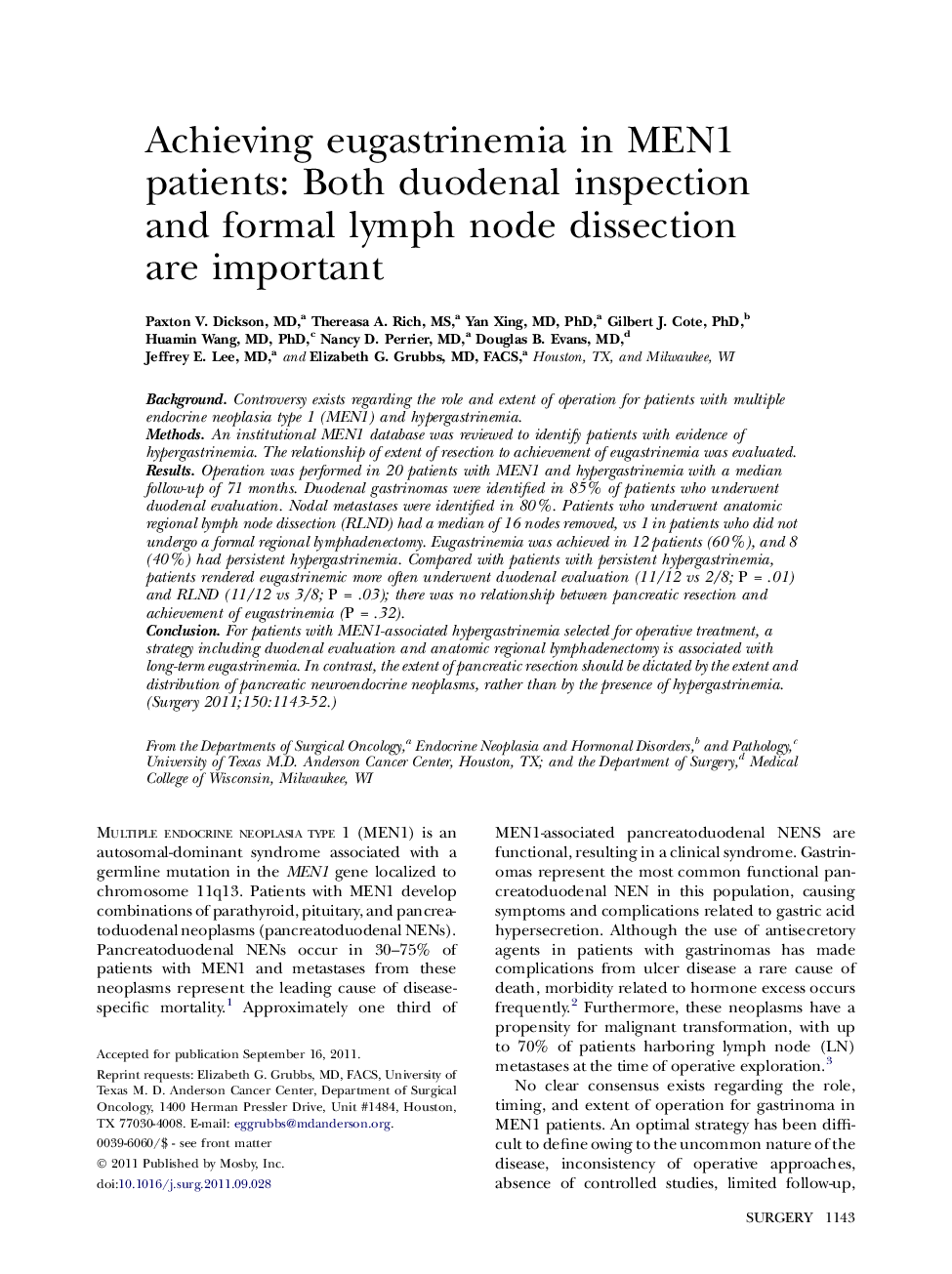| Article ID | Journal | Published Year | Pages | File Type |
|---|---|---|---|---|
| 4308397 | Surgery | 2011 | 10 Pages |
BackgroundControversy exists regarding the role and extent of operation for patients with multiple endocrine neoplasia type 1 (MEN1) and hypergastrinemia.MethodsAn institutional MEN1 database was reviewed to identify patients with evidence of hypergastrinemia. The relationship of extent of resection to achievement of eugastrinemia was evaluated.ResultsOperation was performed in 20 patients with MEN1 and hypergastrinemia with a median follow-up of 71 months. Duodenal gastrinomas were identified in 85% of patients who underwent duodenal evaluation. Nodal metastases were identified in 80%. Patients who underwent anatomic regional lymph node dissection (RLND) had a median of 16 nodes removed, vs 1 in patients who did not undergo a formal regional lymphadenectomy. Eugastrinemia was achieved in 12 patients (60%), and 8 (40%) had persistent hypergastrinemia. Compared with patients with persistent hypergastrinemia, patients rendered eugastrinemic more often underwent duodenal evaluation (11/12 vs 2/8; P = .01) and RLND (11/12 vs 3/8; P = .03); there was no relationship between pancreatic resection and achievement of eugastrinemia (P = .32).ConclusionFor patients with MEN1-associated hypergastrinemia selected for operative treatment, a strategy including duodenal evaluation and anatomic regional lymphadenectomy is associated with long-term eugastrinemia. In contrast, the extent of pancreatic resection should be dictated by the extent and distribution of pancreatic neuroendocrine neoplasms, rather than by the presence of hypergastrinemia.
